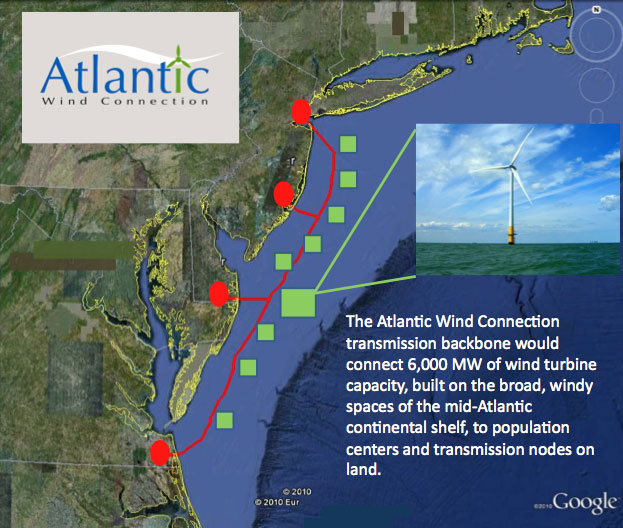Several years ago, legendary energy tycoon T. Boone Pickens unveiled his "Pickens Plan" for getting the US off of foreign oil dependence, based on substantial programs to transition to wind and natural gas to power homes and vehicles, respectively.
Pickens is still championing his ideas, though one of his early efforts to build a wind firm in Texas fell through, largely due to issues with transmitting the electricity from the farm to the power grid.
Now, the Pickens Plan may have a new ally of sorts - the Google Plan, as the web giant announced plans today to make a major investment in helping transmit electricity from an offshore wind farm back to the mainland.
Google will buy a 37.5% stake in the Atlantic Wind Connection project, according to Rick Needham, director of green business operations at Google, in a blog post yesterday.
The project will cost about $5 billion, with Google and project leader Trans-Elect Development Co. beginning with a cash outlay of some $200 million each initially, but with potential investment by Google in the billions in what is not exactly a web service.
As shown in the graphic nearby, the challenge is how to get the power generated by the wind turbines miles offshore back to the power grid. The project involves development of an underwater transmission network that will send power from wind farms off the Mid-Atlantic coast. It is said that eventually the wind farm will power as many as 1.9 million homes from Virginia to New York and New Jersey.

“The North American wind industry hasn’t had any players involved with the motivation and financial heft to really move this market forward,” said Bloomberg energy analyst Charlie Hodges said. “Google could play that role.”
The project is in the very early stages, however, with a feasibility study not planned until 2013. Following a successful study, the first phase of the project would run about 150 miles of undersea cable and cost $1.7 billion to $1.8 billion. Phase I is targeted for completion by early 2016. The second phase to complete the 350 miles of total transmission line could be finished by 2020.
Needham says that the Mid-Atlantic region is well-suited for the project because the area's strong winds and shallow waters make it possible to install wind turbines as far as 15 miles offshore, making them invisible from land and thus likely overcoming past objections to offshore wind farms from coastal home dwellers.
This is Google's second foray into alternative energies - Last July, Google agreed to buy most of the electricity generated by a NextEra Energy Resources LLC wind farm in Iowa, with plans to resell the power to wholesalers, according to Bloomberg.
Many beyond Pickens believe the US needs to move aggressively into more wind power, noting that China is more than doubling the level of its wind power capability versus the US each year.
What do you think of Google's move into alternative energy? Do we need to accelerate such investments? Let us know your thoughts at the Feedback button below.

TheGreenSupplyChain.com is now Twittering! Follow us at www.twitter.com/greenscm
|